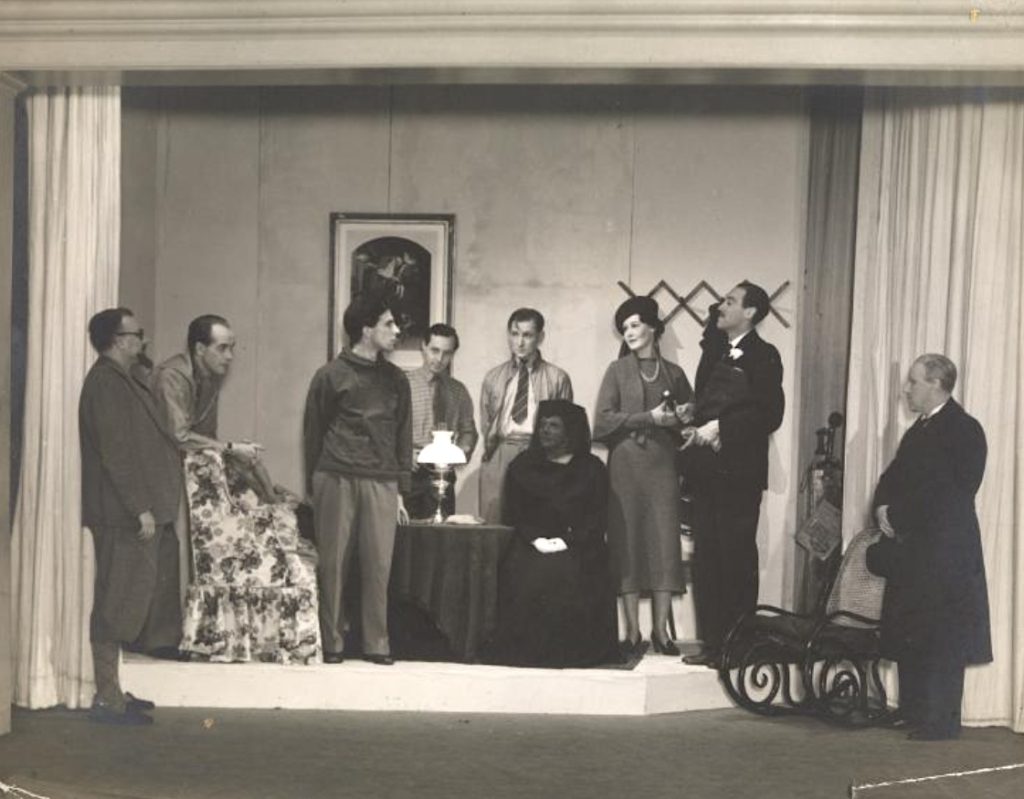OTD in early British television: 31 May 1937

John Wyver writes: Unbilled in Radio Times, and so clearly organised at very short notice, in the afternoon of Monday 31 May 1937, AP broadcast a half-hour of scenes from Rupert Doone’s Group Theatre production at the Little Theatre of The Ascent of F6 by W.H. Auden and Christopher Isherwood.
Only a little over six months after the start of the official BBC service, producers were still scrabbling around for theatre shows that they could tempt in front of the cameras, and work from the theatrical fringe like the Little Theatre was easier to access than West End fare.
A key producer of modernist drama, the Group Theatre had been founded in 1932 by Doone and Robert Medley. In a rich Guardian article from 2023 (which includes a discussion of The Ascent of F6), Sam Kinchin-Smith characterises the enterprise as
one of the motliest and most distinctive gatherings of British and Irish genius of the first half of the 20th century, a dynamic collaboration between artists who transformed their fields and changed the course of modern literary, musical and artistic history.
And among those artists in the 1930s, in addition to Auden (who was a mainstay) and Isherwood, were writers T.S. Eliot, Christopher Fry and Louise MacNeice, composer Benjamin Britten, and designers Duncan Grant, Henry Moore, John Piper and Graham Sutherland.
Doone’s production opened at the Mercury Theatre, home also of Ballet Rambert, in late February 1937, with incidental music by Britten, although from the Programme-as-Broadcast record it appears that this was not featured in the May broadcast. With its lead actor William Devlin it transferred to the Little Theatre, and Devlin was central to the broadcast scenes.
The drama is a complex allegorical study, partly written in verse, of a mountaineer who undertakes an expedition to a peak on the border of a fictional British colony, and is marked by what critic Abbie Garrington identified as
a knotty combination of motivations: political expediency, imperial greed, media frenzy, post-war patriotism and a yearning for spiritual experience.
And for Rebecca D’Monté,
The style deliberately parodies the adventure stories of authors such as John Buchan and Henry McNeile, mocking the British Empire, imperialism and nationalistic pride.

Newly installed AP producer J. Royston Morley (he would soon drop the ‘J.’) handled the cameras for the May 1937 transmission, and he returned to the play and production for a much fuller, 70-minute presentation, including Britten’s music, in September 1938.
Both presentations, and in particular Morley’s use of the studio cameras, are analysed in detail by Jason Jacobs in his foundational study of early television drama, The Intimate Screen (OUP, 2000), which I recommend whole-heartedly.
Images: photographs of the Group Theatre production of The Ascent of F6 by W.H. Auden and Christopher Isherwood, produced by Rupert Doone at the Little Theatre, 1937; the image in the body of the text is by Angus MacBean; from Tate Archive, gift of Robert Medley, licenced under Creative Commons CC-BY-NC-ND 4.0 DEED.
[OTD post no. 165; part of a long-running series leading up to the publication of my book Magic Rays of Light: The Early Years of Television in Britain in January 2026.]
That’s *really* interesting. Doone and the Group theatre have somehow been written out of the history of interwar Modernism in Britain, apart from their links to the literary heroes Eliot and Auden-Isherwood. But there is one visual survival: the dancing figure in Len Lye’s 1936 RAINBOW DANCE is actually Doone. And it’s a cracking film, which I managed to have running in the 2008 V&A Modernism show.
Thanks, Ian. I love Rainbow Dance, but I didn’t know the dancer was Doone. He’s a fascinating figure – lover of Cocteau, dancer with Diaghilev, life partner of painter Robert Medley, choreographer (briefly) with the Ballet Club before it became Rambert.
The staging of F6 transferred by Morley in May 1937 is Doone’s only direct connection with pre-war television; the 1938 studio production by Morley makes no reference to Doone’s original staging. Doone appears not to have danced for television, but the Rambert company and the Mercury Theatre were key elements in the pre-war programming.
Medley too made several appearances, in a discussion with John Piper about stage design, in an exchange with Duncan Melvin about masks, and with one interview on Picture Page.